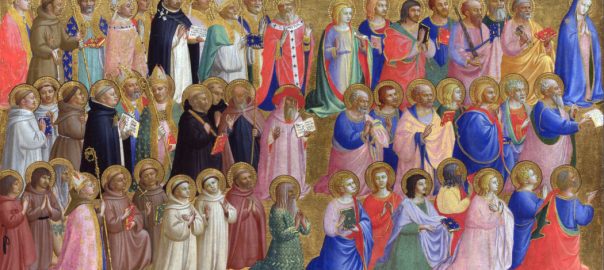What is a Saint?
In the Catholic Church, the saints are ordinary people like you and me who made it to heaven. They’ve done nothing that you and I cannot do, if we persevere in following Jesus Christ and living our lives according to His teaching.
Catholic devotion to the saints is nothing more than respect and admiration for the memory of the deceased heroes of the Church. We honor them as men and women of heroic virtue who can serve as our role models. They were no more perfect than are we; but, at the end of their lives – and hopefully, ours – they received from Our Lord his words, “Well done, good and faithful servant.”
We also ask the saints to intercede for us. Have you ever asked anyone to pray for you when you were having a hard time? That is how Catholics “pray to” the saints – we pray with saints, not to them. As the Letter of James says, “The fervent prayer of a righteous person is very powerful.”
Well-known saints like those below often are remembered in a special way on particular days during the year.
January – February – March – April – May – June
July – August – September – October – November – December
This Weeks Saints

January 4
St. Elizabeth Ann Seton
___
Fesat of the Epiphany

January 5
St. John Neumann
___

January 6
St Andre Bessette
___
Three Kings Day (Trad.)

January 7
St Raymond of Penyafort
___

January 8
St. Lawrence Justinian
___
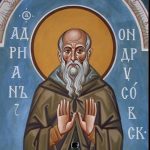
January 9
St. Adrian of Canterbury
___
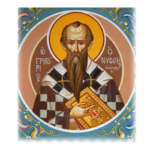
January 10
St. Gregory of Nyssa
__
January 4
St. Elizabeth Ann Seton
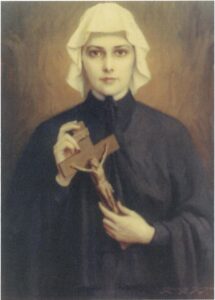
“I will go peaceably and firmly to the Catholic Church: for if Faith is so important to our salvation, I will seek it where true Faith first began, seek it among those who received it from God Himself.”
St. Elizabeth Ann Seton
Privileged daughter, New York socialite, devoted wife, loving mother, convert, catechist, educator, foundress, and tireless servant of God. – Elizabeth Ann Bayley Seton was the first native born American to be canonized by the Catholic Church.
She was born two years before the American Revolution, grew up in the society of upper class New York City, and married a wealthy importer, William Seton. Upon the failure of her husband’s business and his death from tuberculosis, she converted to Catholicism, alienating many of her Episcopalian friends and family. She established a religious community that became the first congregation of religious sisters to be founded in the United States, and its school was the first free Catholic school in America. This modest beginning marked the start of the Catholic parochial school system in the United States. The congregation was initially called the Sisters of Charity of St. Joseph’s; today, six separate religious congregations trace their roots to the beginnings of the Sisters of Charity in Emmitsburg, MD. By 1830, the Sisters were running orphanages and schools as far west as Cincinnati and New Orleans and had established the first hospital west of the Mississippi in St. Louis.
She died of tuberculosis on January 4, 1821, at the age of 46, five years after losing her youngest daughter to the same disease.
January 6
St. Andre Bessette
French-Canadian St. Andre Bessette (1845–1937) was born the eighth of twelve children to a poor working-class family in Quebec, Canada. He was weak and sickly from his birth. When he was nine, his father, a wood cutter, died in a lumber accident; when he was twelve, his mother died of tuberculosis. He was adopted by an uncle, who insisted he earn his keep, and Andre worked at various odd jobs as a farmhand, shoemaker, baker, blacksmith, and factory worker. He was sent to the Congregation of the Holy Cross in 1870 with a note from his pastor saying “I am sending you a saint”. He entered the teaching order without knowing how to read or write at age 25, serving as porter for Quebec’s Notre Dame College for 40 years. At the request of the Bishop of Montreal, he was ordained a priest.
Andre welcomed and prayed for the people he met, especially those who were ill or suffering. When an epidemic of sickness broke out, Andre demonstrated the gift of healing. He gave all the credit to St. Joseph, to whom he had a great devotion. When an epidemic broke out at a neighboring college, Andre volunteered to care for the victims, and not a single one died. Over the years, when word of his sanctity spread, tens of thousands of people came to Bessette for prayer and healing. He worked all day to receive them in person or answer their letters. When his Order wanted to purchase land on Mt. Royal, Bessette buried St. Joseph medals on the property. The owners yielded, the land was sold to the Order, and in 1904, he started building the St. Joseph Oratory on the property with nickels and dimes he had collected. It was completed in 1955 as a basilica.
When he died at the age of 91, it is said that a million people visited his coffin. He was buried in an alcove inside the crypt behind the Votive Chapel at Saint Joseph’s Oratory of Mount Royal. Millions of people were and still are, cured through his prayers and the intercession of St. Joseph. Today Saint Andre Bessette is known as the “Miracle Man of Montreal”.
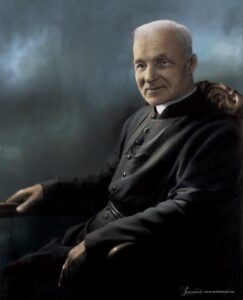
“When you invoke St. Joseph, you don’t have to say much. Say, ‘If you were in my place, St. Joseph, what would you do? Well, pray for this on my behalf.’ “
St. Andre Bessette
